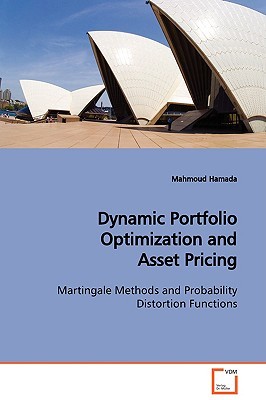
- We will send in 10–14 business days.
- Author: Mahmoud Hamada
- Publisher: VDM Verlag
- ISBN-10: 3639110587
- ISBN-13: 9783639110586
- Format: 15.2 x 22.9 x 1.3 cm, softcover
- Language: English
- SAVE -10% with code: EXTRA
Dynamic Portfolio Optimization and Asset Pricing Martingale Methods and Probability Distortion Functions (e-book) (used book) | bookbook.eu
Reviews
Description
This monograph consists of three contributions to financial and insurance mathematics. The first part considers numerical methods for dynamic portfolio optimization in the expected utility model. It compares the martingale approach to stochastic dynamic programming and provides new theoretical results relating to the Hyperbolic Absolute Risk Aversion class of utility functions. The second part considers the pricing of contingent claims using an approach developed and applied in insurance. It shows that the risk-neutral valuation can be recovered from the probability distortion function approach, thereby establishing consistency between the insurance and the financial approaches. The third part introduces dynamic portfolio optimization with risk measures based on probability distortion functions and provides a formal treatment of this class of risk measures. It employs the martingale approach to examine the consumption- investment problem in discrete time with preferences consistent with the dual (non-expected utility) theory of choice, where subjective probabilities rather than outcomes are distorted to express the investor's risk aversion.
EXTRA 10 % discount with code: EXTRA
The promotion ends in 18d.04:06:28
The discount code is valid when purchasing from 10 €. Discounts do not stack.
- Author: Mahmoud Hamada
- Publisher: VDM Verlag
- ISBN-10: 3639110587
- ISBN-13: 9783639110586
- Format: 15.2 x 22.9 x 1.3 cm, softcover
- Language: English English
This monograph consists of three contributions to financial and insurance mathematics. The first part considers numerical methods for dynamic portfolio optimization in the expected utility model. It compares the martingale approach to stochastic dynamic programming and provides new theoretical results relating to the Hyperbolic Absolute Risk Aversion class of utility functions. The second part considers the pricing of contingent claims using an approach developed and applied in insurance. It shows that the risk-neutral valuation can be recovered from the probability distortion function approach, thereby establishing consistency between the insurance and the financial approaches. The third part introduces dynamic portfolio optimization with risk measures based on probability distortion functions and provides a formal treatment of this class of risk measures. It employs the martingale approach to examine the consumption- investment problem in discrete time with preferences consistent with the dual (non-expected utility) theory of choice, where subjective probabilities rather than outcomes are distorted to express the investor's risk aversion.


Reviews